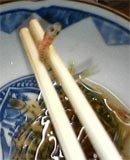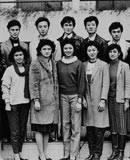不支持Flash
|
2009年考研英语翻译最新模拟题(三)
Text 5
Japanese firms have achieved the highest levels of manufacturing efficiency in the world automobile industry. (46) Some observers of Japan have assumed that Japanese firms use the same manufacturing equipment and techniques as United States firms but have benefited from the unique characteristics of Japanese employees and the Japanese culture. However, if this were true, then one would expect Japanese auto plants in the United States to perform no better than factories run by United States companies. This is not the case. (47) Japanese-run automobile plants located in the United States and staffed by local workers have demonstrated higher levels of productivity when compared with factories owned by United States companies.
Other observers link high Japanese productivity to higher levels of capital investment per worker. But a historical perspective leads to a different conclusion. (48) When the two top Japanese automobile makers matched and then doubled United States productivity levels in the mid-sixties, capital investment per employee was comparable to that of United States firms. Furthermore, by the late seventies, the amount of fixed assets required to produce one vehicle was roughly equivalent in Japan and in the United States. Since capital investment was not higher in Japan, it had to be other factors that led to higher productivity.
A more fruitful explanation may lie with Japanese production techniques. Japanese automobile producers did not simply implement conventional processes more effectively, they made critical change in United States procedures. (49) For instance, the mass-production philosophy of United States automakers encouraged the production of huge lots of cars in order to utilize fully expensive, component-specific equipment and to occupy fully workers who have been trained to execute one operation efficiently. Japanese automakers chose to make small-lot production feasible by introducing several departures from United States practices, including the use of flexible equipment that could be altered easily to do several different production tasks and the training of workers in multiple jobs. (50) Automakers could schedule the production of different components or models on single machines, thereby eliminating the need to store the spare stocks of extra components that result when specialized equipment and workers are kept constantly active.
参考译文
46. 一些日本观察家认为,尽管日本公司使用与美国公司一样的制造设备和工艺方法,但却由于日本雇员和日本文化的独有特征而受益匪浅。
47. 设在美国并雇用当地工人的由日本人开办的汽车厂,与美国公司拥有的汽车厂相比,其生产效率要高得多。
48. 20世纪60年代中期,两家最大的日本汽车制造商开始与美国的生产效率并驾齐驱,而后来则为美国生产效率的两倍,而每位员工计算的资金投入却与美国不相上下。
49. 例如,美国汽车制造商的规模生产的经营方针鼓励大量生产汽车,以便充分利用价格昂贵的零件专用设备并使受过培训、高效操作某一生产程序的工人不停的干活。
50. 汽车工人能够在一台机器上安排生产不同零件或不同型号的部件,这样就不必额外储存部件作为备用件,而当专用设备和专业工人不停的工作时,就必须有这种备用件的储存。
特别说明:由于各方面情况的不断调整与变化,新浪网所提供的所有考试信息仅供参考,敬请考生以权威部门公布的正式信息为准。





